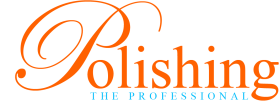
For anyone that has worked in an office environment, I think we can all relate to that heart-dropping, disturbing realization when we landed our first job: I have absolutely nothing to wear. Maybe you’re fresh out of college and have never worn nor owned a button-down, or perhaps you’ve just never worked in a position that required you to follow a dress code. You head to your closet and find nothing but crop tops, leggings, oversized sweatshirts, and ripped jeans and have a slight panic attack because you start on Monday; we’ve all been there.
The tricky thing about office attire is that it ranges from business casual to business formal. The dress code all depends on the atmosphere of the workplace. If your interview is in-person, try and observe how the employees dress so you can get a sense of the dress code early on. If you still aren’t quite sure what’s appropriate to wear to your new job, do yourself a favor and dress more formally on your first day. You can always dress down a little once you get a feel for the office culture, but you won’t get another chance to make a first impression.
If your new job requires a business formal dress code, one staple you should purchase for yourself is a pantsuit. This look exudes confidence and professionalism and is convenient in that you don’t have to spend time matching a top with a bottom. Simply throw on a plain fitted shirt or blouse underneath, and you have a completed, formal business look. Skirt suits are also a clean-cut and polished outfit choice that allows you more freedom to mix and match if that’s your thing. When selecting a pant or skirt suit, make sure you consider fabric and color based on the season. Try linen or cotton and warm tones such as beige, soft pink, or lilac for warmer weather. For colder weather, wool and other heavier materials are best and darker tones such as gray, navy blue, and black. You should always consider external factors and your surroundings when choosing an outfit for work to ensure you dress appropriately.
Business casual allows more wiggle room when dressing for work. You’ll want to purchase some clothing items include button-downs, blouses, knit sweaters, slacks or plaid pants, and dresses. Always avoid spaghetti straps, cropped shirts, and dresses that are short or bright in color. This dress code seems easier to follow but is often more challenging given the scope of choices you now have. As long as the pieces you’re putting together complement each other, then you’re on the right path. If you’re selecting a top and bottom with varying shades, make sure they are still within the same color family for a look that’s fresh and put together. Also, try playing with different designs and patterns such as plaid or stripes, but never pair two pieces in different ways together! If you’re wearing patterned pants, your best bet is to pair a top that is a solid color and vice versa.
If you’re still having trouble finding your work wardrobe, a helpful tip is to buy just enough clothes to hold you over for your first week. This strategy buys you some time to study how your co-workers dress and helps you avoid purchases you may regret. Your attire may not match the vibe perfectly right away, but what matters is that you adapt to the culture on time. Whatever you choose to wear, make sure that you feel comfortable and, most importantly, confident!
FEB
2022
